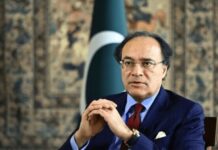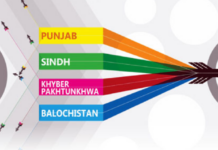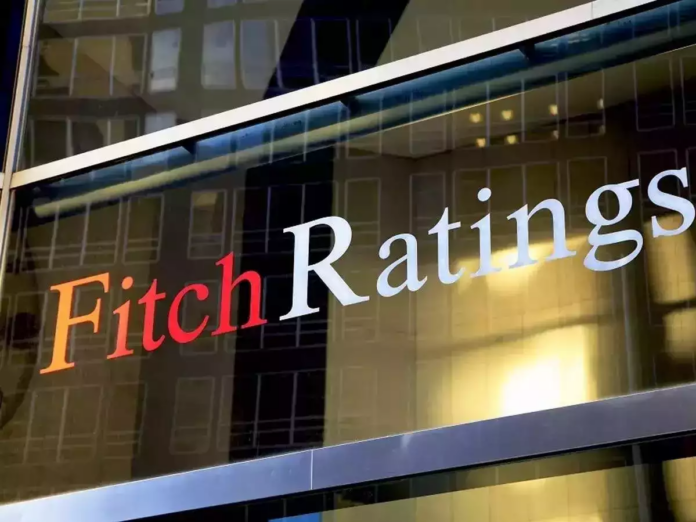ISLAMABAD: Pakistan has received a sovereign credit rating upgrade from Fitch Ratings to ‘B-’, marking a notable shift in sentiment as macroeconomic indicators show signs of stabilisation. The development, highlighted in the Finance Division’s Monthly Economic Update released Thursday, reflects a confluence of improving fiscal management, external sector resilience, and a sharp decline in inflation.
The fiscal deficit narrowed over the first nine months of FY2025, driven by stronger revenue growth that outpaced public spending. Total revenue surged 36.7 per cent year-on-year to Rs13.37 trillion, supported by a 68 per cent jump in non-tax revenues — largely attributable to profits from the State Bank of Pakistan, petroleum levies, dividends, and energy surcharges. The Federal Board of Revenue also reported robust tax collection. As a result, the primary surplus widened, while the current account posted a surplus of $1.9 billion, aided by rising exports and worker remittances.
Inflation, meanwhile, dropped to a record low. Consumer prices rose just 0.3 per cent year-on-year in April — down from 0.7 per cent in March and 17.3 per cent a year earlier — as food and energy costs declined sharply. Perishable food prices fell 26.7 per cent, transport costs by 3.9 per cent, and utility expenses by 2.6 per cent. On a monthly basis, overall prices fell 0.8 per cent. This steep disinflation prompted the central bank’s Monetary Policy Committee to reduce the policy rate by 100 basis points to 11 per cent on May 5, anticipating a more accommodative monetary stance ahead.
While large-scale manufacturing (LSM) posted year-on-year growth of 1.8 per cent in March, overall momentum remained sluggish, with the sector contracting 1.5 per cent during the Jul-Mar period. Out of 22 tracked sectors, 12 posted gains — including textiles, apparel, petroleum products, beverages, and pharmaceuticals. The automobile industry emerged as a clear outperformer, with strong growth in the production of cars (38.3 per cent), trucks and buses (95.8 per cent), and pickups and jeeps (80 per cent).
Cement sales remained relatively flat, with total dispatches at 37.3 million tonnes during Jul-Apr. Domestic sales declined by 5.6 per cent, but export volumes surged nearly 29 per cent, highlighting a shift in demand patterns.
In agriculture, government policy interventions continued to bear fruit. Wheat was sown on 22.07 million acres during the Rabi season, with an expected output of 28.98 million tonnes. Credit disbursement to the sector rose by 15 per cent to Rs1.88 trillion over Jul-Mar, while imports of farm machinery increased by 10 per cent to $69.2 million. Fertiliser availability for the Kharif season is expected to exceed demand, with Urea and DAP supplies projected at 4.01 million and 840,000 tonnes respectively — comfortably above estimated offtake levels, which are both significantly higher than last year.
Pakistan’s external buffers have also improved. As of May 16, foreign exchange reserves stood at $16.6 billion, including $11.4 billion held by the central bank. Broad money growth slowed to 4.7 per cent during the first ten months of the fiscal year, down from 7 per cent last year, while Net Foreign Assets more than doubled. Credit to the private sector expanded to Rs751.5 billion — more than triple the amount recorded in the same period last year.
Despite encouraging macro trends, capital markets reflected lingering geopolitical uncertainty. The benchmark KSE-100 index fell by 6,480 points in April amid regional tensions, closing at 111,327 points. Market capitalisation declined by Rs853 billion, though partial recovery was seen in May.
The Finance Division also highlighted continued momentum in poverty alleviation. The Pakistan Poverty Alleviation Fund, in partnership with 24 organisations, disbursed 20,705 interest-free loans amounting to Rs960 million in April alone. Since 2019, over 3 million loans worth Rs116.7 billion have been distributed. Spending under the Benazir Income Support Programme reached Rs409.4 billion during Jul-Mar, up 28.7 per cent year-on-year.
In a bid to channel climate finance and signal a shift toward environmentally responsible growth, the government has launched its first-ever Green Sukuk. This initiative — coupled with support from the IMF’s Resilience and Sustainability Facility — underscores the state’s intention to drive inclusive, sustainable economic development in the years ahead.























